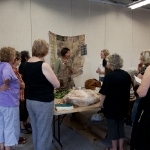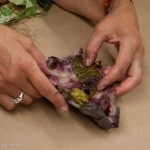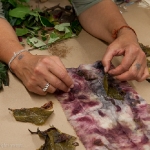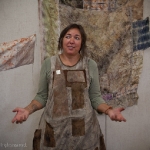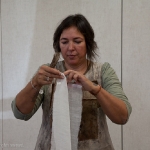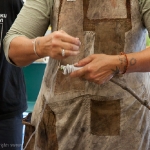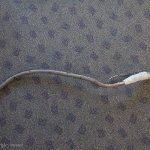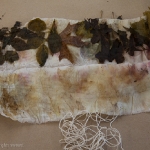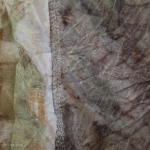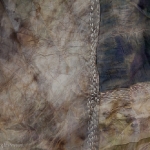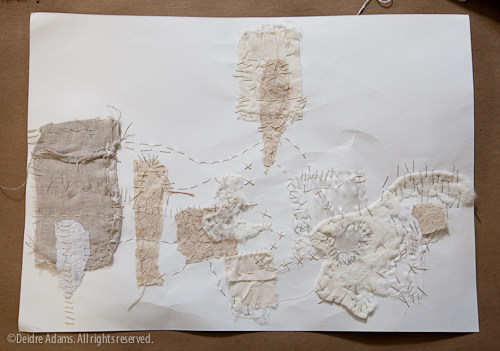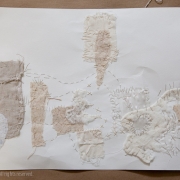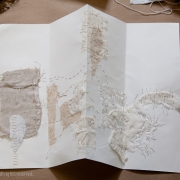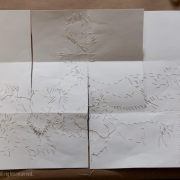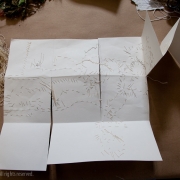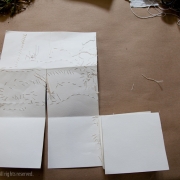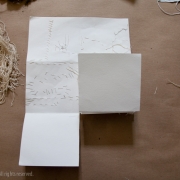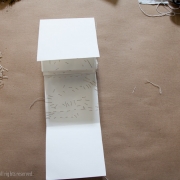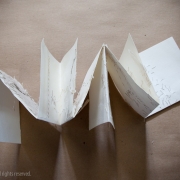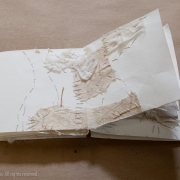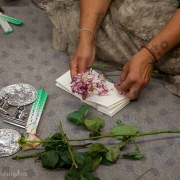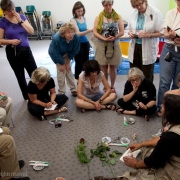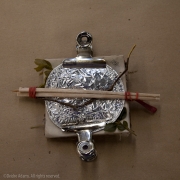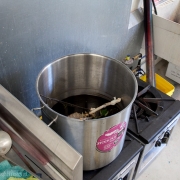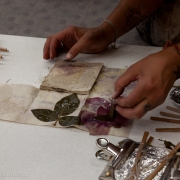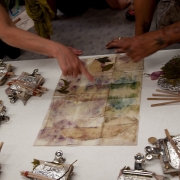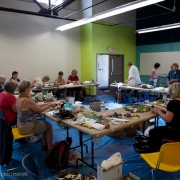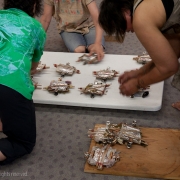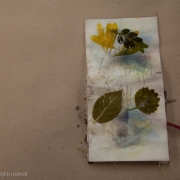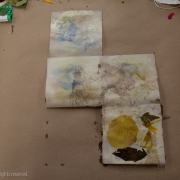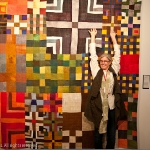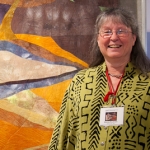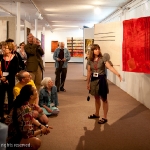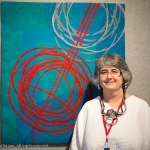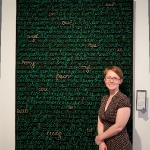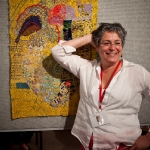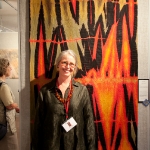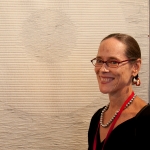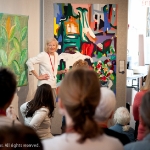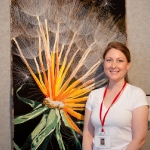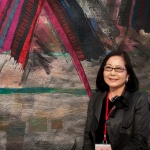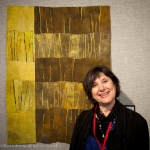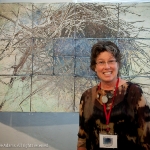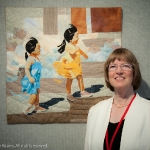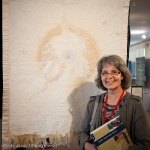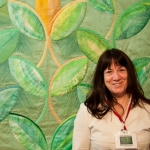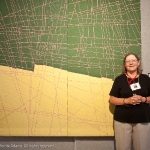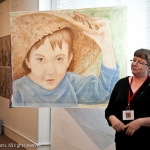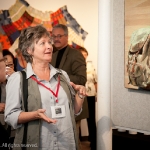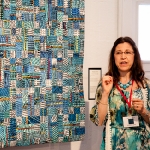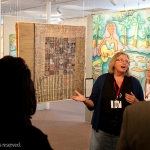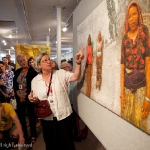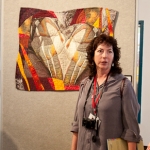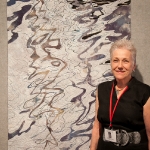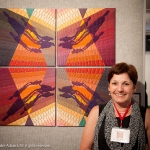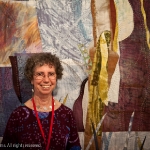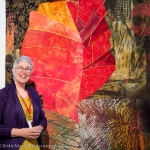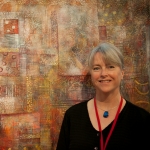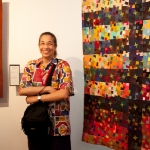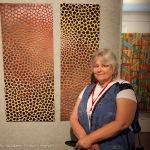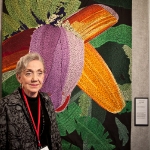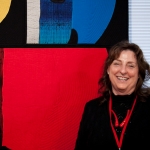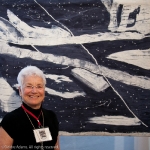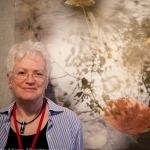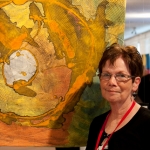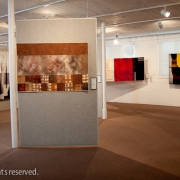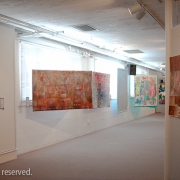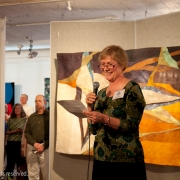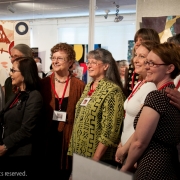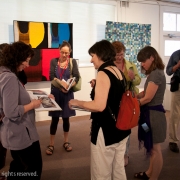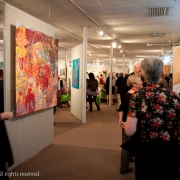SDA – India Flint, Part I
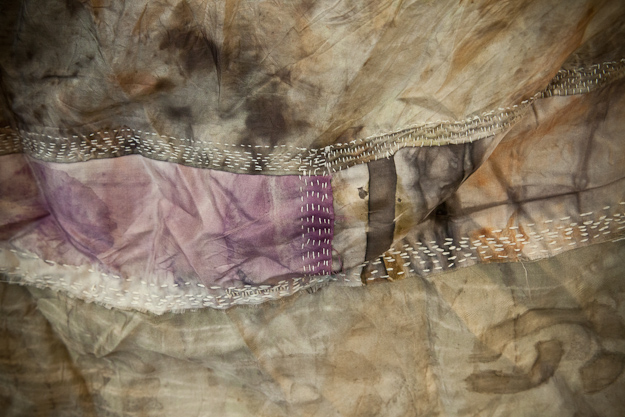
Silk fabric eco-dyed and hand-stitched by India Flint
This week I’m in Minneapolis, Minn. for the Surface Design Association Conference. This is my second time at SDA, and this time, I decided to give myself a gift: a workshop with an artist whose work I admire greatly. India Flint calls herself a “maker of marks, forest wanderer & tumbleweed, stargazer & stitcher, botanical alchemist & string twiner, working traveller, dreamer, sax player and occasional poet.” She is the author of Eco Colour: Botanical Dyes for Beautiful Textiles, which is a guide to coloring cloth using locally sourced plant materials.
I don’t remember now where I first heard of India, but somehow I found her blog and web site and fell in love with the extraordinary yet delicate beauty of the plant-dyed fabrics she creates. I bought her book last year, not only to find out the details of how to make these magical marks on cloth, but also because the book is just plain beautiful. It contains a wealth of information on the different plants that can be used as well as types of mordants that can be employed to improve the strength of the dye bonds produced. The most compelling thing about the process is that it doesn’t involve harmful chemicals and can be done fairly easily without the need for buying expensive equipment or materials.
India lives on her own farm in Southern Australia, but she travels the world and teaches extensively. This particular workshop is called “Enfoldments – A Traveler’s Notebook.” We’re combining the dyeing techniques with hand stitching and simple bookmaking techniques to “explore ways of recording and describing responses to place and country as a means of making sense of wherever
India began the class with the opening of a “bundle” she had created the previous day. A bundle is a length of fabric which is rolled up together with leaves and flower petals and other assorted bits and tied tightly around a stick, then submerged into a pot of water and given a gentle simmer for a prescribed amount of time. We would be making many bundles throughout the course of the week, and the the opening of one’s bundles after dyeing to see the lovely gifts granted from nature is a greatly anticipated event.
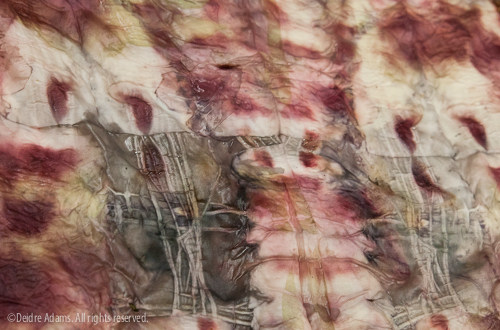 Fabric eco-dyed by India Flint
Fabric eco-dyed by India Flint
We then went outside for a “windfall walk,” the purpose of which is to gather leaves and flower petals that have fallen to the ground. Small bits of rusted metal and odd scraps of paper are also treasures to bring back for our books. Once back to the workshop, we used our harvest to create our own first bundles.
After learning the basic process, the next step was to start making the pages of our book. To that end, we were each given a sheet of heavy drawing/wash paper and given instructions to collage fabric and paper using thread and stitch – no glue. I got rather caught up in doing the stitching – I even took my piece back to my room that night to work on it some more. I do love to stitch on fabric, but I found it to be a lot more difficult on paper. If I’m going to be doing much more of this in future, I’m going to need more protection for my needle-grabbing fingers. My thumb was very sore after a couple of hours of doing this.
The second day, we started to make the books. India showed us a simple way to make a very basic artist’s book from a single sheet of paper with folding and cutting. Then we used the same dyeing principles with our folded books to get color on the pages. Although mine turned out rather pale, some of the others were quite spectacular.


